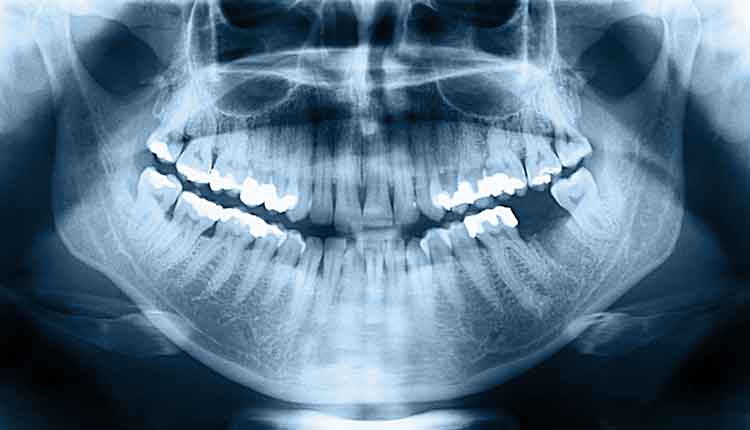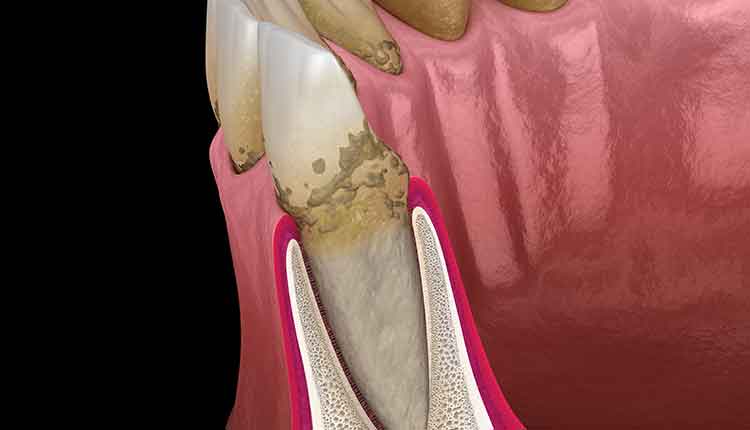
Providing scaling and root planing in a general practice benefits the patient, as it generally improves the status of periodontitis. Dental hygienists are periodontal co-therapists and can readily facilitate the initial management of periodontitis. Regarding when to make a referral post-scaling and root planing, a referral should be made well before any teeth become mobile. Radiographic indication of infrabony bony defects; deep pockets that have not improved with scaling and root planing; and systemic risk factors, such as smoking and diabetes, are indicative of progression toward mobility. Once diagnosed, these factors should shorten the timeframe to making a referral post-scaling and root planing.
Photo Credit: BravissimoS / iStock / Getty Images Plus

Simple Rationale
A simple rationale for why to make a referral to a periodontist is if the general practice has reached its limitations in managing risk for continued attachment loss. In addition, a referral should be considered if the general practice does not have in-house surgical capabilities for regenerative or resective therapy. In determining risk, some practices use probing depths than or equal to 5 mm as an indication for referral. However, limitations to this metric occur, as in the case of delayed or altered passive eruption. The detachment of excess gingival tissues covering part of the enamel may result in a pocket. The amount of attachment loss in this case may actually be negligible.
Photo Credit: zlikovec / iStock / Getty Images Plus

Food for Thought
From a more practical standpoint, the percentage of bone loss over time and the architecture of the bone loss may be a compelling reason to make a referral. If the bone loss indicated on two sets of radiographs taken at two different time intervals is increasing, then this finding indicates active disease and, therefore, motive to have a periodontist involved. Another key reason for referral is the architecture of the bone loss, specifically, whether the bone loss indicated on the radiograph is vertical or horizontal. Vertical or angular bone loss is indicative of infrabony defects, which are likely to progress. Horizontal bone loss with a clearly defined crestal lamina dura likely indicates stability.
Photo Credit: wildpixel / iStock / Getty Images Plus

Vertical Defects
When vertical defects are radiographically evident, the prognosis is poor without effective root debridement. By contrast, the prognosis improves with effective root debridement. To achieve a positive outcome, the level of advanced therapeutic capabilities of the general practice plays a determining role in the decision to refer. Surgical access—whether obtained via conventional open flap debridement or via a laser-assisted new attachment procedure—is often the key to effective root debridement and the potential for repair/regeneration of the periodontium. If the general practitioner has limited surgical capabilities, referral to an in-house periodontist or to a referral-based office would be in the patient’s best interest.
Photo Credit: gilaxia / iStock / Getty Images Plus

Gingival Recession
Gingival recession is another aspect of periodontal attachment loss and can be a concern in the presence of increasing root exposure. Root exposure may result in sensitivity, root caries, the development of noncarious class V lesions, or an unesthetic appearance of the dentition. After risk factors for gingival recession are evaluated, gingival augmentation procedures may reduce the risk for further root exposure. Depending on the amount of interdental bone loss, a soft tissue graft procedure may also result in root coverage. Under these circumstances, a referral to a periodontist may help the patient obtain options and pursue predictable treatment.
Photo Credit: watanyou / iStock / Getty Images Plus

Bony Contours
Underlying bony contours influence the final outcome of healing after resective periodontal surgery is provided. Periodontists receive extensive training in bone reshaping and healing outcomes. In circumstances where exposure of the tooth for restorative treatment or an esthetic crown lengthening procedure involves bone reshaping, the general practice may consider referral.

